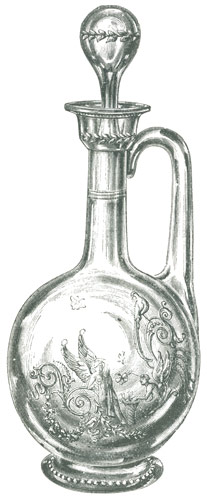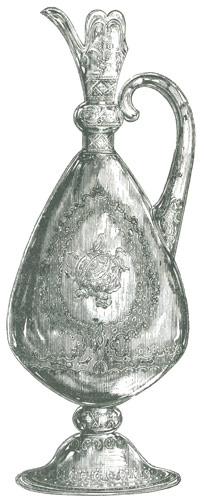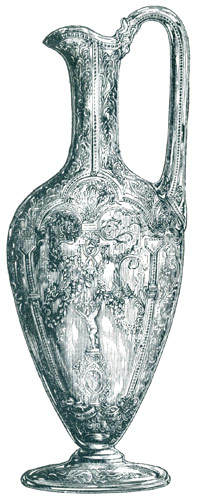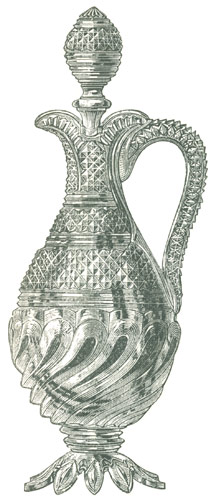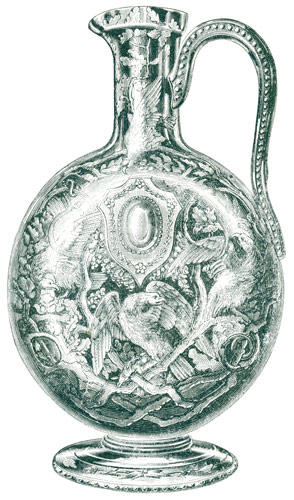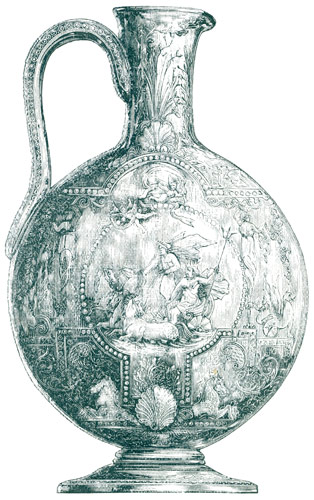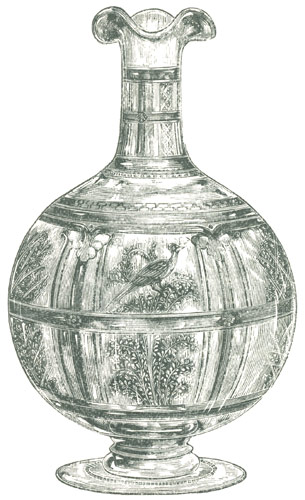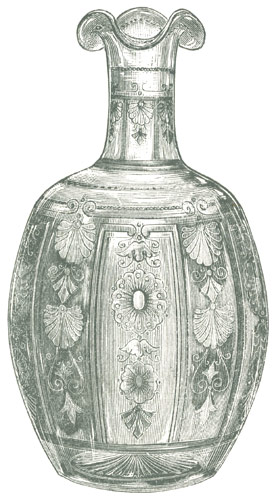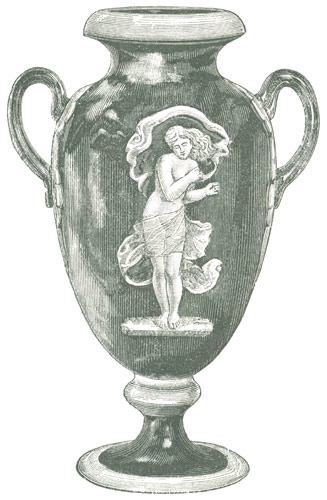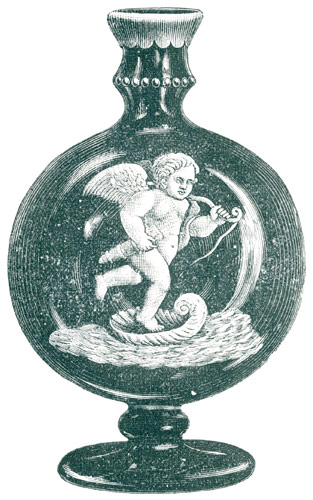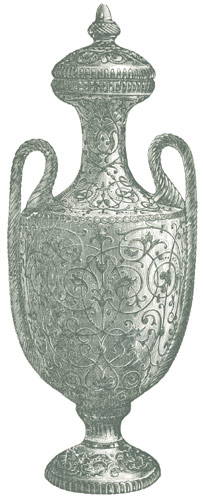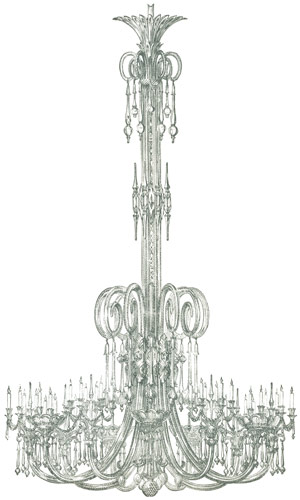$7,300. Unfortunately this vase is cracked on the outside opal glass coating. This house displays quite a variety of spirally spun threaded wares in very line threads, closely run together; a variety of thin goblets blown round, but shaped into octagons at the edge by being pinched with a suitable tool; finely engraved jugs in clear, half-clear, and dead surfaces.
John Millar & Co., Edinburgh.
A very handsomely engraved jug, representing the Canterbury Pilgrims, worth $150, which I consider quite cheap for such a skillful piece of work; handsomely cut decanters of superior workmanship: very thin blown wares, also of good execution.
The Aurora Glass Company, London.
In the cases of this company could be seen a great variety of small fancy vases in “metallized glass.” These were made of different colored glasses, in which could be seen metal flakes of gold and platina distributed unevenly through the body of the glass.
The metals used are principally white and yellow. It is presumed these metals are reduced to powder or thin leaves, and when the article is in process of manufacture the glass is rolled in this metallic dust, which then adheres to the glass, and, by reheating, the article is finished in the usual way. A piece of broken glass of this variety showed the metals to be near the outer surface and slightly sunk into the glass. Although the inventor holds his discovery to be a wonderful one, and attached ridiculous prices on his goods, I see nothing in it to commend it as a valuable process in the decoration of glass. No regular patterns can be produced, and at best this glass will never look anything else than an accidental decoration. The inventor calls the invention “precious metals melted and incrustated in glass.”
Kilner Bros., Thornhill-Lees and Conisboro’, Yorkshire.
This firm exhibited druggist glass ware, bottles in green, blue, and brown glass, all blown in molds, demijohns, etc., apparently all of good quality.
E. Breffit & Co., of the Aire and Calder Glass Bottle Company, London.
An assortment of bottles, jars, demijohns, soda-water bottles, in ordinary blue and green glass.
The same kind of goods were also exhibited by Bagley, Wild, & Co., of Knottingley, Yorkshire.
In conclusion, I think that the display in the British section was equal to any other exhibit in beauty and purity of flint metal, in skill, and in execution. Their colored glasses, in many instances, are very pretty, but do not equal the

